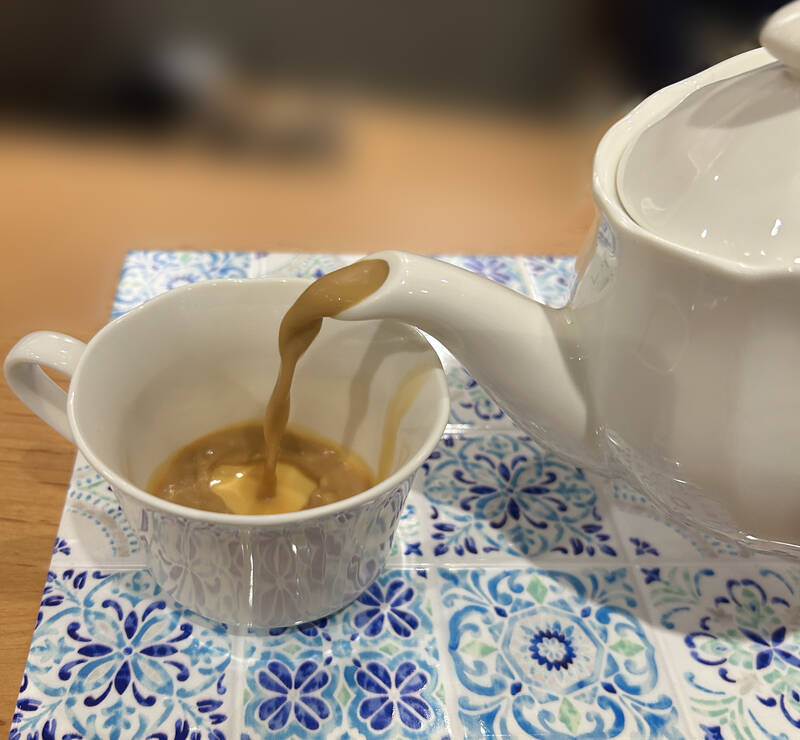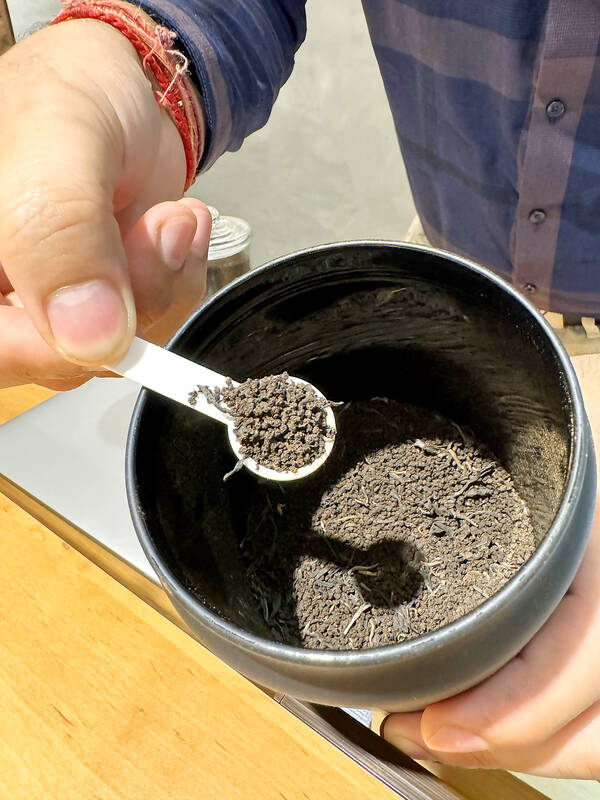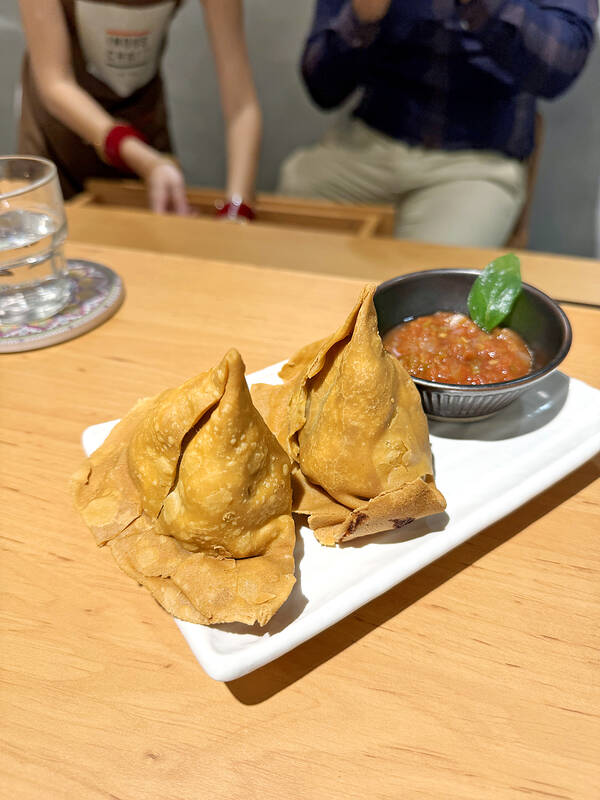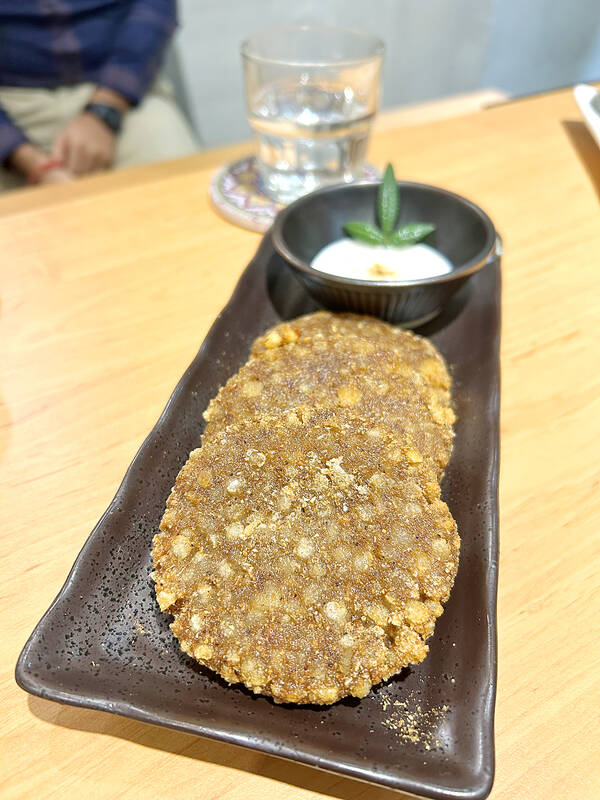Standing over a simmering pot of chai, Stella Ku’s (古詩筠) gold bangles jingle as she crushes ginger roots and mixes freshly ground cardamom into individual saucepans. The tea leaves, handpicked from the misty mountains of Assam and Darjeeling, take 10 minutes for the perfect brew.
Ku herself is from Taichung, but this recipe hails from generations of her husband’s family, the skills passed down to her by her mother-in-law and perfected over months of practice in Punjab, India.
Indus Chai in Daan District (大安) is a small family-run business, blending rich Indian traditions with Taiwan’s growing demand for gluten-free dining. This spot is a rarity: a celiac-owned and operated business with an entirely gluten-free menu. For us gluten-eaters, it’s a quiet spot to while away a rainy afternoon with owner Rajat Majitha, always keen to share his wealth of tea-related expertise over a mug of spicy chai.

Photo: Hollie Younger
Chai is the most consumed drink in India after water.
“We don’t have a common language, dress or culture, but what unites India is chai,” Majitha says.
British colonialists took tea from China to India and utilized the lush climate, fertile soil and, ultimately, cheap labor. For the British elite, 90 percent of the tea leaves ended as waste, discarded as a fine dust. But for poorer local tea farmers and factory workers, it was gold dust: cheap caffeine.

Photo: Hollie Younger
“India loves milk, and India loves spice,” says Majitha, which soothed the beverage’s bitterness as it spread across the country, sold from the shoulder poles of Chai Wallahs.
Today, chai is as much an art and a delicacy as its British-brewed ancestor. Majitha uses the world’s two best black teas, Darjeeling and Assam, which he hand-selects at auctions in India.
Indus Chai sells a range of brews, from fall specials with cinnamon and ginger to a green cardamom Elaichi Chai and their classic Masala Chai (all NT$340). Cardamom reduces body temperature for summer sipping, while ginger heats the body with a spicy kick. These China teapots of chai are expensive by Taipei standards, but each is made to order and uses only the best ingredients.

Photo: Hollie Younger
For the food options, I admittedly look to my celiac accomplice for her opinion; there’s a reason we typically use gluten for fluffy doughs and crispy batters. But the bread used for their Masala Sandwich (NT$260) is delivered by Taichung’s Kiseki Bakery and is pretty darn good, with the right balance of chewy and airy.
The samosa (NT$180) casing is crispier than expected, but it keeps the snack light with its heavy chickpea and potato-based filling. Without gluten as a binding agent, the chickpea, tapioca and rice flour dough cannot be folded or stretched. Majitha takes up to two hours each morning to hand-make the day’s samosas. My only complaint, why am I served Mexican-style salsa on the side when there exists such a thing as mango chutney?
The best snack is overwhelmingly the sabudana vada (NT$180), Indian-style hash browns served in thin discs with a mint-yogurt dip. These traditionally use tapioca pearls, an interesting use of Taipei’s beloved ingredient for desserts and bubble teas.

Photo: Hollie Younger
Celiac options in Taipei are extremely limited; there exists just a small selection of gluten-free restaurants and a discouragingly small Facebook group. Gluten-free diets appear to be incredibly rare here, due to genetic or lifestyle factors, when compared to Western capital cities. It’s not just noodles and bao buns to watch out for — gluten lurks in nigh-on everything Asian, from soy sauce to Taiwan Beer. But Majitha takes care to keep every process and every surface free from flour and contaminants, while Ku puts just as much love into each pot of chai.
Overall, Indus Chai delivers on its promise: exceptional tea, celiac-safe snacks, and a warm slice of India in the heart of Taipei.

Photo: Hollie Younger

Most heroes are remembered for the battles they fought. Taiwan’s Black Bat Squadron is remembered for flying into Chinese airspace 838 times between 1953 and 1967, and for the 148 men whose sacrifice bought the intelligence that kept Taiwan secure. Two-thirds of the squadron died carrying out missions most people wouldn’t learn about for another 40 years. The squadron lost 15 aircraft and 148 crew members over those 14 years, making it the deadliest unit in Taiwan’s military history by casualty rate. They flew at night, often at low altitudes, straight into some of the most heavily defended airspace in Asia.

This month the government ordered a one-year block of Xiaohongshu (小紅書) or Rednote, a Chinese social media platform with more than 3 million users in Taiwan. The government pointed to widespread fraud activity on the platform, along with cybersecurity failures. Officials said that they had reached out to the company and asked it to change. However, they received no response. The pro-China parties, the Chinese Nationalist Party (KMT) and Taiwan People’s Party (TPP), immediately swung into action, denouncing the ban as an attack on free speech. This “free speech” claim was then echoed by the People’s Republic of China (PRC),

Many people in Taiwan first learned about universal basic income (UBI) — the idea that the government should provide regular, no-strings-attached payments to each citizen — in 2019. While seeking the Democratic nomination for the 2020 US presidential election, Andrew Yang, a politician of Taiwanese descent, said that, if elected, he’d institute a UBI of US$1,000 per month to “get the economic boot off of people’s throats, allowing them to lift their heads up, breathe, and get excited for the future.” His campaign petered out, but the concept of UBI hasn’t gone away. Throughout the industrialized world, there are fears that

Like much in the world today, theater has experienced major disruptions over the six years since COVID-19. The pandemic, the war in Ukraine and social media have created a new normal of geopolitical and information uncertainty, and the performing arts are not immune to these effects. “Ten years ago people wanted to come to the theater to engage with important issues, but now the Internet allows them to engage with those issues powerfully and immediately,” said Faith Tan, programming director of the Esplanade in Singapore, speaking last week in Japan. “One reaction to unpredictability has been a renewed emphasis on